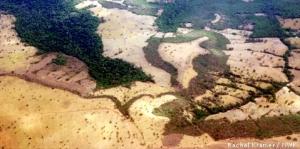So let’s start with this mind blowing statistic brought to us by a recent study by Stanford researcher Holly Gibbs:
Over the 20 years between 1980 and 2000, more than half a million square miles of new farmland was created in the developing world.
Of this land, over 80% was carved out of tropical forests! So over these 20 years, rainforests were the primary source for new agricultural land !
So what have Gibbs and her team of researchers added to this debate? With the aid of Landsat (Satellite-based maps provided by NASA) technology, they have mapped and quantified which types of land have been replaced by this immense area of new farmland. And what was by far, the majority type of land taken over for farming? That’s right, tropical rainforests.
But what do these numbers mean to us today? This has all happened in the past, so why is this study so currently relevant? And what could this mean for forests in the future? Well, recent data shows past trends are continuing.
Also, there are various studies suggesting different scenarios, but let’s look at recent figures released by the United Nations Food and Agriculture Organization (FAO). They have estimated that because demand is predicted to grow (due to population growth, change in consumer habits, etc.) global agricultural production will also need to increase. This increase will require more land to be cleared for agriculture. How much more? They estimate approximately 10 billion hectares by 2050! (This figure is more than double the current land base)
While there are very clearly so many variables which can affect this figure, what we should all realize is that if this trend identified by Gibbs continues, the increased demand will be a threat to millions of additional acres of tropical forest. Meeting this demand without destroying forests will be an enormous challenge.

